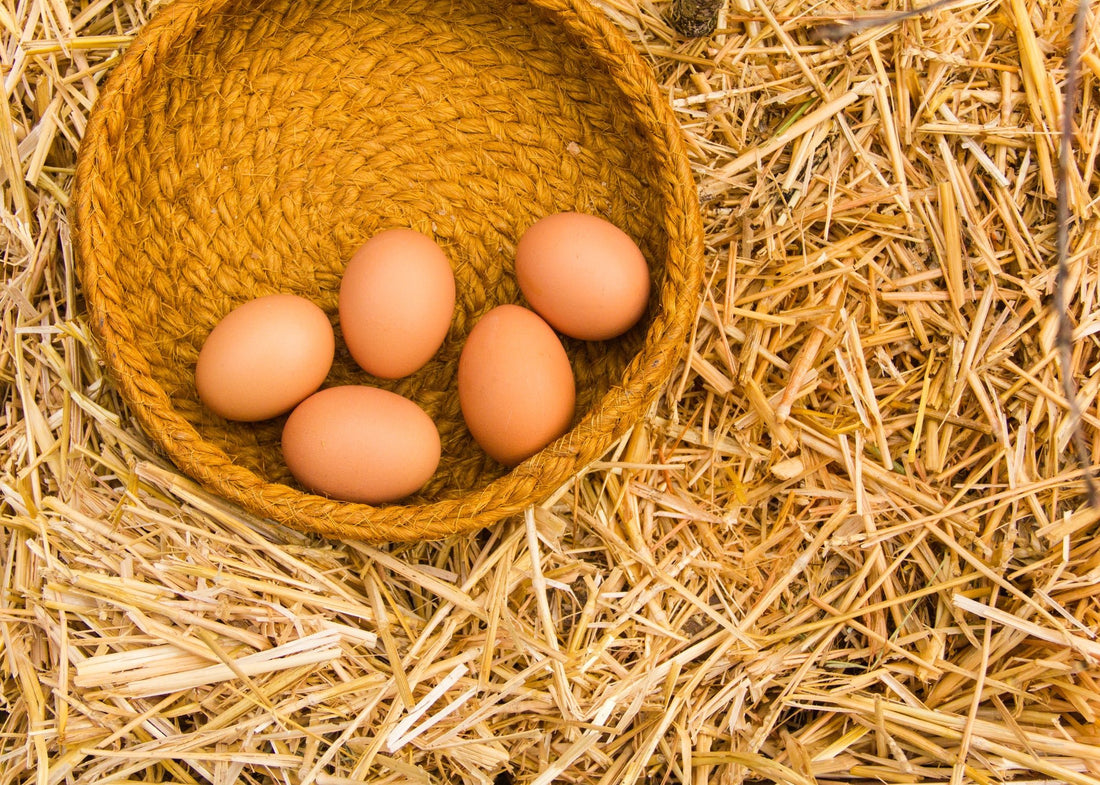If you're raising chickens, you probably know that providing them with a suitable environment is essential to their health and well-being. One aspect of their environment that often gets overlooked is nesting materials. While it may seem like a minor detail, the materials you use for nesting can have a significant impact on your chickens' health, productivity, and happiness. In this article, we'll explore why nesting materials matter for chickens and offer some tips on how to choose the right materials for your flock.
What Are Nesting Materials?
Nesting materials are the materials used to line the nesting boxes where your chickens lay their eggs. These materials serve several important purposes, including:
Insulation: Nesting materials help keep eggs warm and protect them from temperature fluctuations.
Cushioning: Soft nesting materials help prevent eggs from cracking or breaking.
Hygiene: Clean nesting materials help prevent the spread of disease and keep eggs clean.
Comfort: Comfortable nesting materials help keep hens calm and relaxed, which can lead to better egg production.
Common Nesting Materials
There are many different materials you can use for nesting boxes, each with its own advantages and disadvantages. Here are some of the most common options:
Straw
Straw is one of the most popular nesting materials for chickens. It's readily available, inexpensive, and easy to work with. Straw is also relatively absorbent, which helps keep the nesting boxes clean and dry. However, straw can be dusty, which can irritate your chickens' respiratory systems.
Hay
Hay is similar to straw but tends to be softer and more fragrant. It's a good choice if you're looking for a natural, biodegradable option. However, like straw, hay can be dusty and may not provide enough cushioning for fragile eggs.
Pine Shavings
Pine shavings are another common choice for nesting materials. They're absorbent, relatively inexpensive, and have a pleasant scent that can help mask odors. Pine shavings also tend to be less dusty than straw or hay. However, some people find that they don't provide enough cushioning for fragile eggs.
Sand
Sand is a popular option for outdoor nesting boxes. It's easy to clean and doesn't absorb moisture, which can help prevent bacterial growth. Sand is also relatively dust-free, which can be good for chickens with respiratory issues. However, sand can be abrasive and may not provide enough cushioning for fragile eggs.
Recycled Paper Products
Recycled paper products, such as shredded newspaper or paper pulp, can be a good choice for nesting materials. They're absorbent, soft, and free from dust and bacteria. However, they can be more expensive than other options, and some chickens may try to eat the paper, which can be harmful.
Why Nesting Materials Matter for Chickens
Now that we've covered some of the most common nesting materials, let's explore why these materials matter for your chickens.
Health
The nesting materials you use can have a significant impact on your chickens' health. Dusty materials, such as straw or hay, can irritate your chickens' respiratory systems and lead to respiratory issues. Bacteria and parasites can also thrive in dirty or damp nesting materials, which can lead to diseases like coccidiosis or salmonella.
Choosing clean, absorbent materials like pine shavings or recycled paper products can help keep your chickens healthy and prevent the spread of disease.
Productivity
Comfortable, calm hens are more likely to lay eggs regularly than stressed or uncomfortable hens. Choosing soft, cushioned nesting materials can help keep your hens calm and relaxed, which can lead to better egg production.
Egg Quality
Nesting materials can also impact the quality of your eggs. Cush ioned materials like pine shavings or recycled paper products can help prevent eggs from cracking or breaking, which can reduce the likelihood of bacteria entering the egg and causing spoilage. Absorbent materials can also help keep eggs clean, which can improve their appearance and marketability.
Behavior
The nesting materials you use can also impact your chickens' behavior. For example, chickens may try to eat straw or hay, which can lead to impacted crops or other health issues. Using materials that are free from dust and bacteria, such as pine shavings or recycled paper products, can help prevent these issues and encourage your chickens to behave more naturally.
Choosing the Right Nesting Materials
When choosing nesting materials for your chickens, there are a few factors to consider:
Availability
Some nesting materials, such as straw or pine shavings, are readily available at most farm supply stores. Others, such as recycled paper products, may be harder to find or more expensive. Consider what materials are readily available in your area and how much you're willing to spend.
Absorbency
Look for materials that are absorbent and can help keep your nesting boxes clean and dry. Pine shavings and recycled paper products are both good options in this regard.
Comfort
Choose materials that are soft and cushioned to help prevent eggs from cracking or breaking. Pine shavings or hay can provide some cushioning, but if you're looking for a softer option, consider using a product specifically designed for poultry nesting.
Dust and Bacteria
Avoid materials that are dusty or prone to bacterial growth, such as straw or hay. Instead, opt for materials like pine shavings or recycled paper products that are clean, dust-free, and free from bacteria and parasites.
Nesting materials may seem like a minor detail, but they play a significant role in your chickens' health, productivity, and happiness. Choosing the right materials can help prevent disease, improve egg quality, and encourage natural behavior in your chickens. Consider factors like availability, absorbency, comfort, and dust and bacteria when selecting nesting materials for your flock, and you'll be well on your way to creating a healthy and happy environment for your chickens to thrive.

